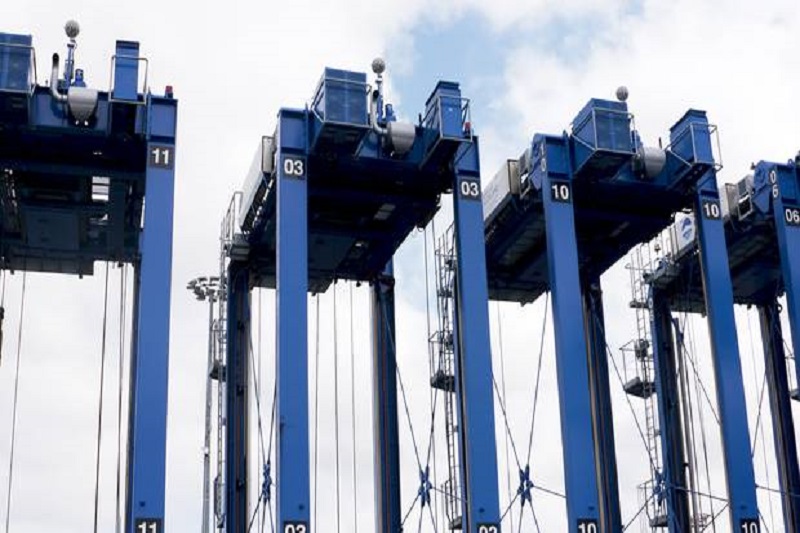
The automation of the Ports of Auckland will entail having new 70-tonne straddle carriers. These carriers will hurtle around with up to 22km/h in speed and without anyone at the controls.
As reported, project completion will have the port’s 27 new blue carriers involved in an elaborate dance to get containers on and off ships.
The process will be controlled by software at the head office.
There will be no human contact with the container from the time the truck driver unscrews the twist locks until before it is hoisted by crane and deposited on a ship.
Same process will apply for imports, except it will be done in reverse.
The system is now being tested. Empty containers are stacked high to act as a barrier in case something goes wrong.
The idea of using straddle carrier technology, together with the port’s three new cranes, was seen as a game changer for the issue of expansion through further reclamation.
No to expansion via further reclamation
The Auckland Council-owned port is under pressure from New Zealand First to relocate to Whangārei.
The Government is conducting a comprehensive review of the upper North Island logistics and freight to guarantee that New Zealand’s supply chain is fit for purpose in the longer term.
The review will guide the development and delivery of a freight and logistics strategy for the upper North Island.
This includes a feasibility study to explore moving the location of Ports of Auckland, with consideration to be given to Northport.
Given its constrained area, something had to be done to grow the port.
Using technology to improve productivity
Automation will increase the Ports of Auckland’s terminal capacity from just over 900,000 TEU (20-foot equivalent units) a year to around 1.6-1.7 million.
Auckland will be the first New Zealand port to partially automate its container terminal.
Moreover, the straddle carriers will save as much as 10% on fuel use.
The new carriers will deliver more capacity because they can stack four containers compared to just three for the existing carriers.
This will increase capacity by 80% when combined with changes to the terminal layout and past reclamation work.
The carriers come with a positioning system called Locator. It is a type of ground-based GPS that boasts an accuracy of plus or minus 3cm.
The high-tech carriers will initially work with the port’s new NZ$ 60 million, 82.3m high cranes which weigh in at 2100 tonnes apiece.
With these new cranes as well as the new deep water berth sitting alongside them, the port will be able to handle the biggest ships coming to these shores.
They can lift four containers at once, weighing up to 130 tonnes combined, which is a New Zealand first. The current cranes can lift two containers, weighing up to 65 tonnes.
Automation timeline
Ports of Auckland is only the second port in the world to automate as a “brownfields” development. Most automated ports are built from scratch.
The northern third of the terminal, where the new cranes are, will be automated initially while the southern part will continue with manned straddle carriers.
Once it is satisfied that the technology is working to plan, the port company will complete the rollout for the rest of the terminal.
The first stage goes live in February next year, followed by the second stage in April.
By the middle of 2020, the port should have a fully operational automated container terminal.
















